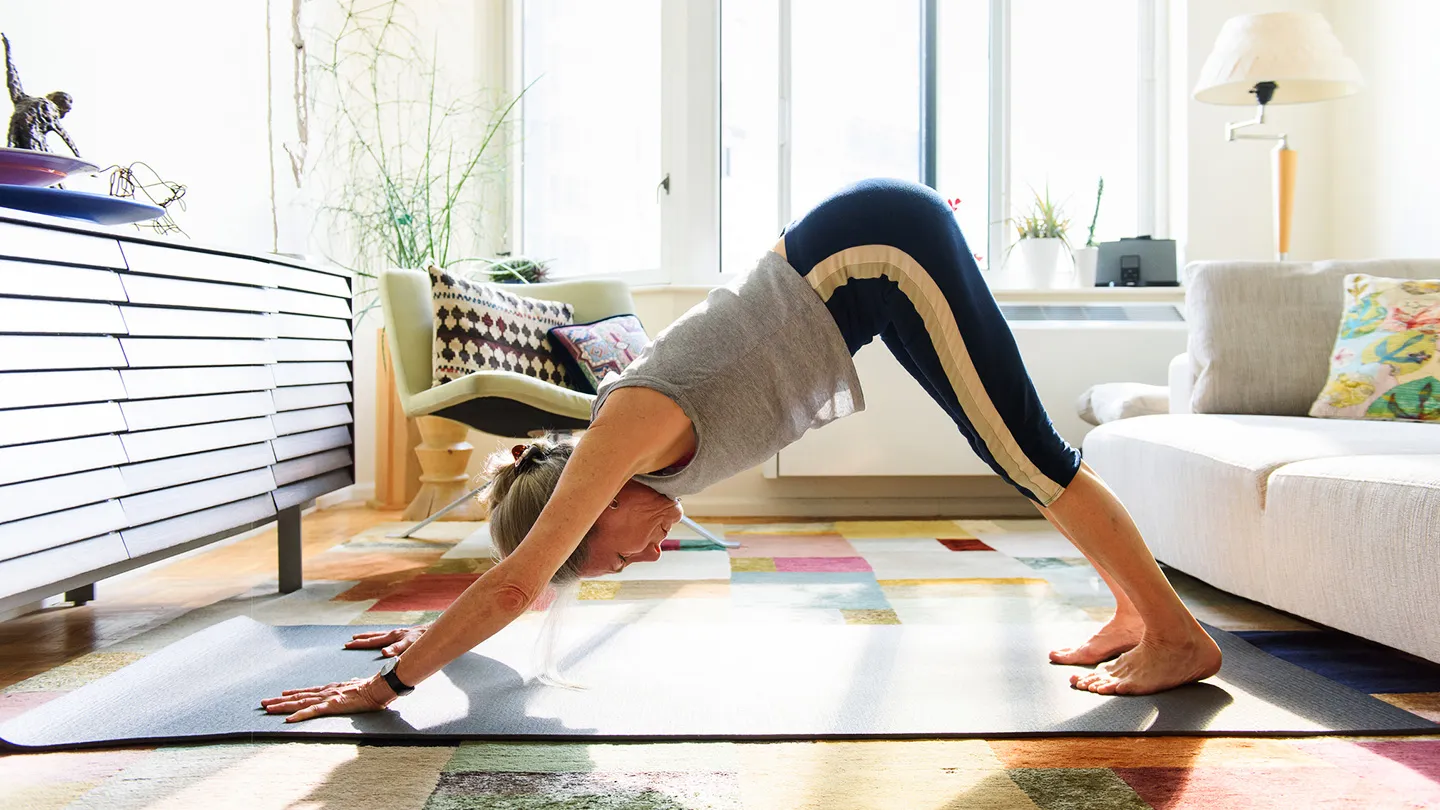
Some people with rheumatoid arthritis avoid all exercise. They fear pain, swelling, or joint damage. But avoiding movement completely can stiffen joints faster. You lose range. Muscles weaken. The pain shifts, but it doesn’t leave. The key is not more intensity—it’s different intention. Exercises that feel subtle often work best when joints are inflamed and unpredictable.
Your body responds better when exercises respect its daily rhythm and pain levels
Not every day allows movement. Some mornings, your fingers resist buttons. Other times, your knees ache more. That’s okay. Safe exercise for rheumatoid arthritis doesn’t demand consistency—it invites permission. On good days, stretch more. On bad days, rest without guilt. The goal is continuity, not perfection. This rhythm makes movement sustainable, not punishing.
Gentle stretching often brings more relief than full workouts ever could
You don’t need a gym membership to start. A few minutes of wrist circles help typing feel easier. A gentle neck stretch lowers tension from shoulders. Hips soften with slow rotations. These stretches don’t burn calories, but they unlock function. Joints hate being ignored. They need quiet attention more than intense exertion. That difference matters daily.
Water supports your joints in ways dry land simply can’t
Aquatic therapy isn’t only for rehabilitation centers. Warm pools reduce pressure on inflamed joints. They help movement feel lighter. Walking through water offers resistance without impact. Floating gives your spine a break. This environment turns pain into possibility. You move more, hurt less, and build confidence quietly. No machines. No noise. Just buoyancy and breath.
Even five minutes of controlled breathing and posture can reduce joint tension
Breath controls tension. It slows the nervous system. Combined with gentle posture work, it reduces joint strain. Sit tall, inhale fully, exhale slowly. Let your shoulders settle. These small shifts train your body to relax around pain. They won’t change inflammation, but they change how your muscles react to it. That softening changes everything.
Walking, when paced carefully, can restore rhythm without exhausting your reserves
You don’t need to reach 10,000 steps. You just need to move with awareness. Short, flat walks with supportive shoes help joints regain rhythm. Avoid hills. Avoid uneven paths. Focus on posture. Some days you’ll stop early. Others, you’ll go farther. Each walk tells your body it’s still capable, even when RA tries to convince you otherwise.
Yoga, when modified, provides strength without asking joints to carry weight
Traditional poses often need adjustment. Kneeling might hurt. Balancing may feel risky. But seated or wall-supported versions work. Yoga connects breath with motion. That link calms inflammation’s noise. You build flexibility around limits—not by ignoring them. With practice, movement becomes smoother, and stiffness speaks softer. You don’t need to bend deeply—you just need to begin.
Resistance bands allow muscles to activate without stressing fragile joints
Dumbbells can feel harsh on wrists. Machines may feel rigid. Resistance bands adapt. You control the tension. You decide the speed. Shoulders engage without jerking. Elbows stay aligned. This control matters in flare-ups. Resistance training doesn’t require metal—it requires intention. Bands provide that freedom, safely.
Cycling on a stationary bike supports hips without loading the knees too hard
Outdoor cycling may jar joints. But stationary bikes offer controlled motion. You set the pace. You control resistance. Pedaling strengthens thighs, supports knees, and encourages circulation. Keep the seat high to protect your joints. Ten minutes daily builds tolerance. This rhythm supports daily function—especially standing, sitting, and balance.
Tai chi slows movement down until you notice which part needs more care
Fast workouts overlook pain. Tai chi doesn’t. Its deliberate pace reveals where movement sticks. Joints open gently. Balance sharpens. Breath deepens. You don’t need to memorize forms. Just follow slow motion. This practice shifts you from reaction to awareness. It honors arthritis without feeding it. That quiet control builds confidence in silence.
Even small changes in body mechanics can reduce pressure on overloaded joints
Safe movement isn’t always about exercise—it’s about how you move through your day. Use your whole hand, not fingers alone. Use forearms to lift, not wrists. Bend knees when reaching. These mechanical choices matter. They reduce microtrauma. They preserve energy. This isn’t just about exercise—it’s about navigating life with awareness.
Progress isn’t linear, and safe movement honors that variability
You’ll have setbacks. Some weeks walking hurts. Other times, wrists flare. Safe movement isn’t about progress charts. It’s about maintenance. Each gentle session tells your joints they’re not abandoned. Each pause tells your body it’s allowed to rest. You’re not failing—you’re adapting. That shift changes how you feel within your skin.
Guided physical therapy helps reset your baseline without guessing blindly
A physical therapist trained in rheumatology adjusts everything to your condition. Reps, posture, timing—they fine-tune every detail. What feels wrong to you may just need repositioning. They teach exercises you won’t find online. This relationship doesn’t just improve movement—it gives structure, accountability, and personalized goals. That structure helps you feel less alone in the process.
Muscle memory fades without use, but pain increases when overused
That tension defines safe movement in rheumatoid arthritis. Use muscles gently and frequently. Rest when needed. Avoid high-impact. Avoid long immobilization. The middle ground—light movement, steady rhythm—is where relief lives. Not all motion helps. But stillness carries its own risks. Finding the line takes time, but your body usually knows it before your mind does.
What keeps you moving long term is what listens to pain without obeying it
Pain is information. It shouldn’t control the story. Safe exercises ask: what’s possible today? They don’t push through—they move around. They shift, adapt, and rest when needed. And by doing so, they help your body trust itself again. That trust is where function begins, even in the middle of discomfort.
